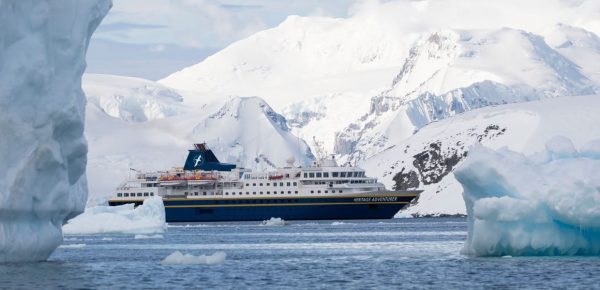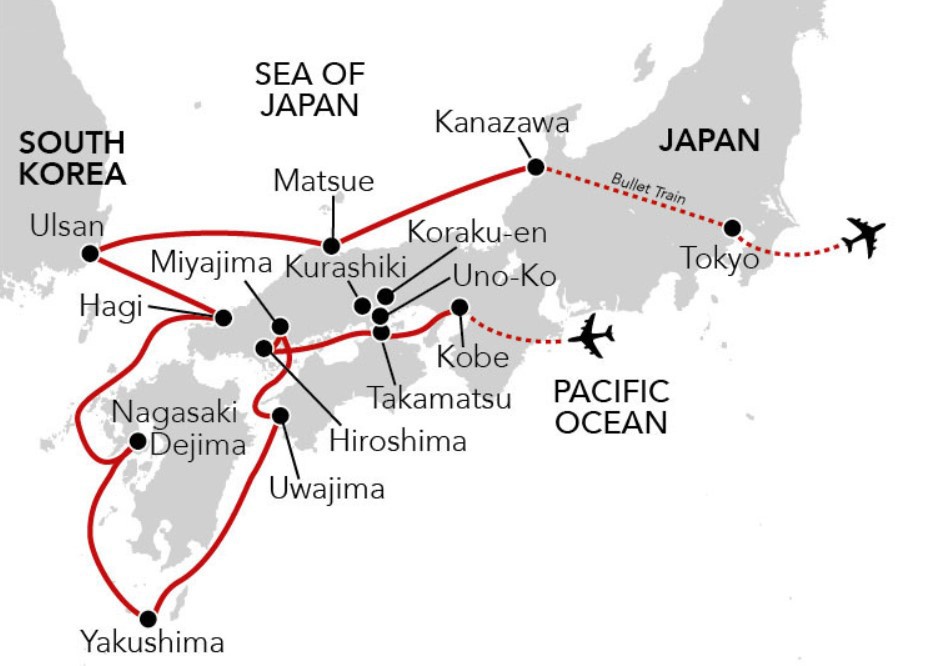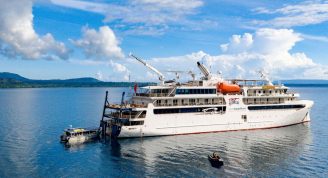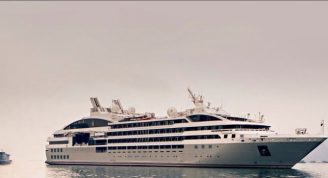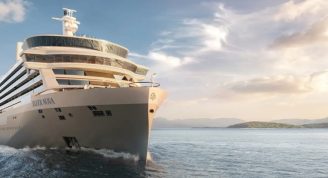Description
Join us for this unusual voyage which combines some of Japan’s best known highlights with visits to some of the lesser known islands and ports of southern Japan and a day spent in South Korea’s World Heritage Site of Gyeongju. So many of Japan’s treasures are accessible from the coast and our eleven night cruise will take us to some of the most magnificent.
Sailing south from Kobe we visit some intriguing places including Shikoku Island where a slower pace of life is enjoyed and Yakushima Island which is a world away from the hustle and bustle of Japan’s mega cities with its towering mountains and ancient forest. Here we can enjoy nature at its best with walks to appreciate the diverse fauna including the impressive old cedars. Amongst the many cultural highlights will be the iconic gardens of Ritsurin and Koraku-en, the shrines and pagodas at Miyajima and our visits to the serene castle town of Matsue and the ancient feudal town of Hagi.
For those who favour a historical perspective, we will see the Peace Memorial at Hiroshima, the abundant archaeological sites of Gyeongju revealing ancient Korean history and visit Nagasaki where we will gain further insight into its World War II history as well as its role in international trade during the isolation period.
Our comprehensive itinerary is a wonderful mix of culture, history and the natural world which will be achieved with ease from aboard the Heritage Explorer. We will discover the many facets of Japan in the company of a small group of fellow like-minded passengers, and our Guest Speaker and Japanese guides who will travel with us will bring to life all that we see and experience.


